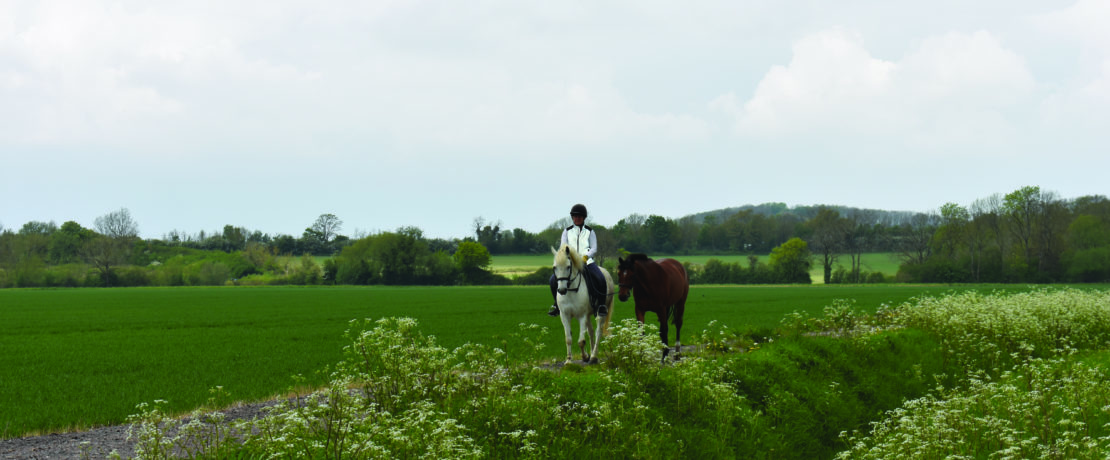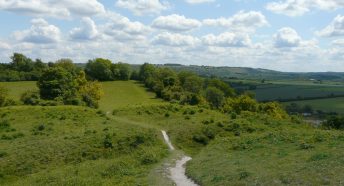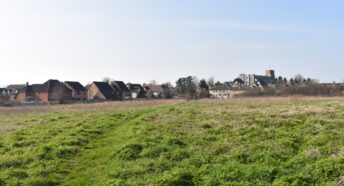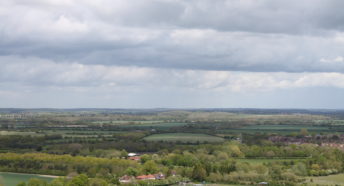Do Central Bedfordshire Council care about the Green Belt?
Recent CPRE Bedfordshire objections to the proposed crematorium in Flitwick, Greenwoods new town near Wrest Park and the A6-M1 link road have hinged on the fact that they would mean building on Green Belt land.
But what does the term Green Belt actually mean, where can Green Belt designated land be found in Bedfordshire, and what protections does it offer? We take a look and then ask whether Central Bedfordshire Council (CBC) are really interested in protecting and enhancing this valuable local and national asset.
Green Belt
A Green Belt is a defined area of countryside around a town or city which is protected from ‘inappropriate’ forms of development, as defined in government planning policy on Green Belts. Controls over new development, especially housing, are tighter than for most of the countryside. There are 14 Green Belts throughout the country, covering about 13% of England, which provide fresh air for around 30 million people. The trees, hedgerows and fields act as a carbon sink, can help reduce flooding and reduce the ‘heat island’ effect of towns and cities. Quality or appearance of land is not a factor when deciding whether to designate it as a Green Belt.
The five purposes of the Green Belt are:
- Check unrestricted sprawl of urban areas
- Prevent neighbouring towns from merging with each other
- Assist in safeguarding the countryside from encroachment
- Preserve the setting and special character of historic towns
- Assist in urban regeneration by encouraging the recycling of derelict and other urban land
Green Belt land provides access to open countryside for urban dwellers, along with opportunities for outdoor activities. There tend to be more Public Rights of Way, Country Parks, publicly accessible woodland and open access land in Green Belts than in non-designated countryside. Green Belt land is also important for agriculture, forestry and related uses.
Green Belt in Bedfordshire
Bedfordshire’s only Green Belt land is on the northernmost edge of the London Metropolitan Green Belt. It provides Luton, Dunstable, Flitwick, Ampthill and Leighton Buzzard with Green Belt designated land.
A lot of countryside described by local people as Green Belt is not actually officially designated as such. Bedford, for example, has no Green Belt, but has a Green Wheel scheme which provides access to parks, countryside and other green spaces. This undesignated countryside often provides many of the same benefits for people and wildlife associated with Green Belt land.
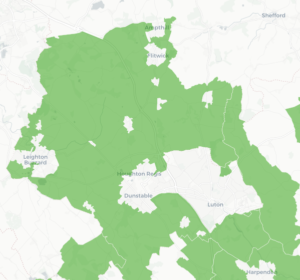
Central Bedfordshire Council and the Green Belt
CBC removed around 420 hectares of land from the Green Belt as part of the recent Local Plan Review and have recently granted planning permission on an unallocated Green Belt site for a food store – we need to protect what is left.
Flitwick crematorium
CPRE Bedfordshire lodged a call in request because we believed that the application raises issues of National Importance, sets planning precedents which will adversely impact on Green Belt land and should be determined by an independent Inspector.
- The site is not allocated for development in Central Bedfordshire Council’s (CBC) Adopted Local Plan.
- The Site is within the Green Belt and there are no Very Special Circumstances to justify development.
The call in request was refused, with the decision left to CBC.
A6-M1 Link Road
We outlined a range of objections to the scheme under two headings – impact on nature and the countryside, and economic, political and democratic impacts. The call in request was also refused. The MHC&LG, said in response to CPRE Bedfordshire’s request:
“The Government remains committed to giving more power to councils and communities to make their own decisions on planning issues and believe that planning decisions should be made at the local level wherever possible. The Secretary of State has decided, having had regard to this policy, not to call in this application. He is satisfied that the application should be determined at a local level.”
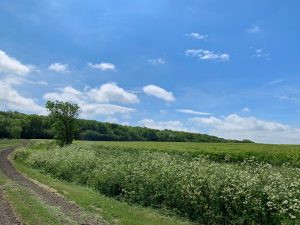
Greenwoods New Town
CPRE Bedfordshire supports a local action group which has been launched to help people respond to a proposed development near Wrest Park. The proposed development would represent encroachment into the Green Belt countryside and would fail to preserve the setting and special character of the historic nature of the setting. Therefore, it is in conflict with the purposes of the Green Belt. There are no material considerations that have been demonstrated that clearly outweigh the harm caused to the Green Belt. This application is likely to be returning to CBC in a modified form this year.
Local democracy
Are CBC listening to the views of local people? In all three of the examples above, local action groups and concerned residents expressed their concerns, as did organisations like CPRE Bedfordshire, the Chilterns AONB Board and Luton Borough Council. Local people value the green spaces and countryside on their doorsteps for a range of reasons, including health and wellbeing, access to nature and recreation. On Sunday 13th February groups from across Bedfordshire braved the weather to take part in peaceful protest walks, raising awareness of threats to green spaces and open countryside.
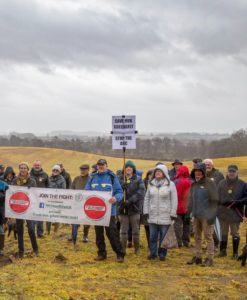
Climate change
In July 2019 Central Bedfordshire Council committed to prioritise responding to climate change with the creation of a Sustainability Plan. CPRE Bedfordshire would like to see the impact of climate change acknowledged and integrated across the whole of CBCs activities, including in the Local Plan. This would include the impact of road building and development.
Marking their own homework
Is it right that CBC are able to approve their own applications on Green Belt and AONB land without any external oversight? In the case of the crematorium application, CBC are the Funder, Developer and Operator of the facility. They are setting precedents for ignoring their own recently adopted Local Plan and what constitutes the Very Special Circumstances (VSC) to justify Green Belt development.
What next for the Green Belt in Central Bedfordshire?
CPRE Bedfordshire’s view is that Green Belt and AONB designated land is under serious threat. CBC seem unwilling to defend it from developers and indeed put forward their own applications for taking land out of the Green Belt. Instead they should be protecting and enhancing the countryside next door which is so valued by local residents.
London Green Belt Council
CPRE Bedfordshire are a member of the London Green Belt Council. This is a grouping of over 100 organisations including councils, residents and environmental groups with a mutual concern for London’s Green Belt. The organisation shares knowledge and information on the threats and opportunities across London’s Green Belt, makes representations on relevant planning policies and lobbies and influences policy and decision makers. In partnership with LGBC the local CPREs produce a map of current threats to the Green Belt – proposals which will result in loss of Green Belt land. This is used to monitor irreversible loss of Green Belt land and amenities.
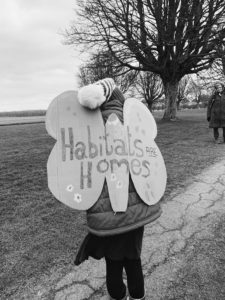
What next?
Watch this space as we will be continuing to share information about threats to the Green Belt in Central Bedfordshire and ways to get involved at local and national level.
We’ll keep standing up for the Bedfordshire countryside. Want to stand with us? Sign up now for monthly news on our work or join us as a member from just £3 a month.
